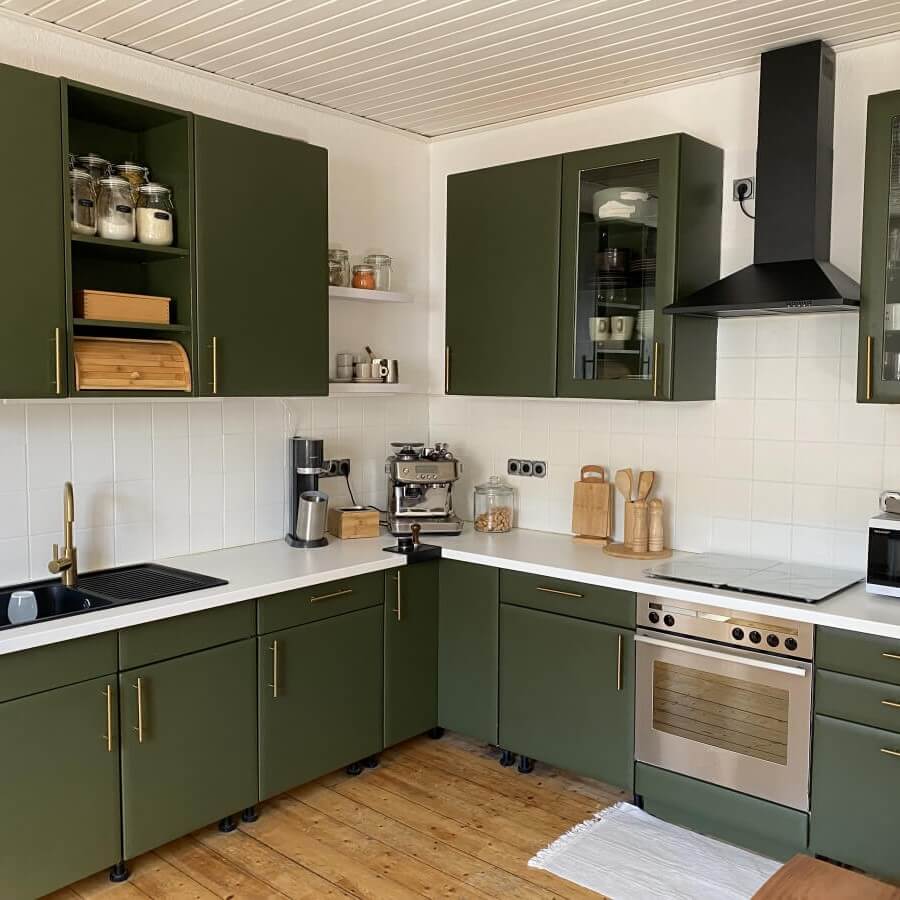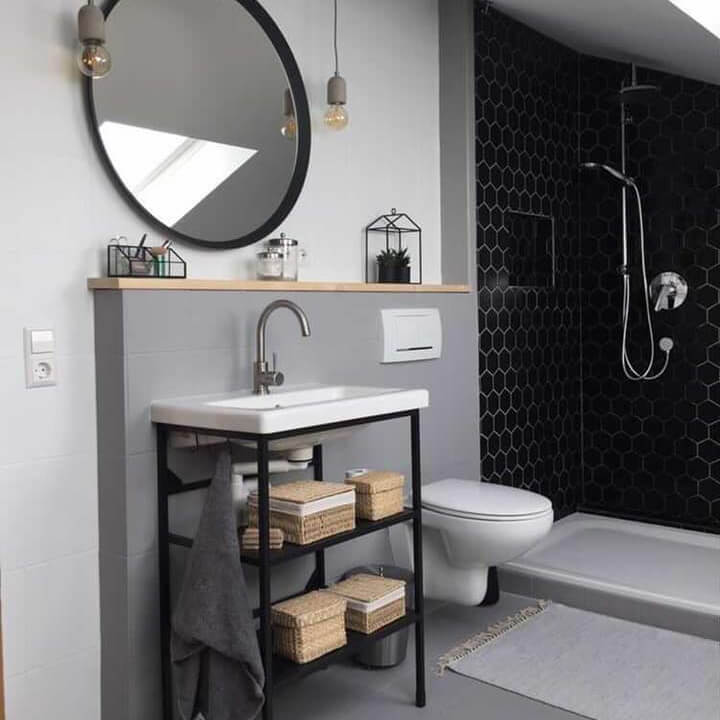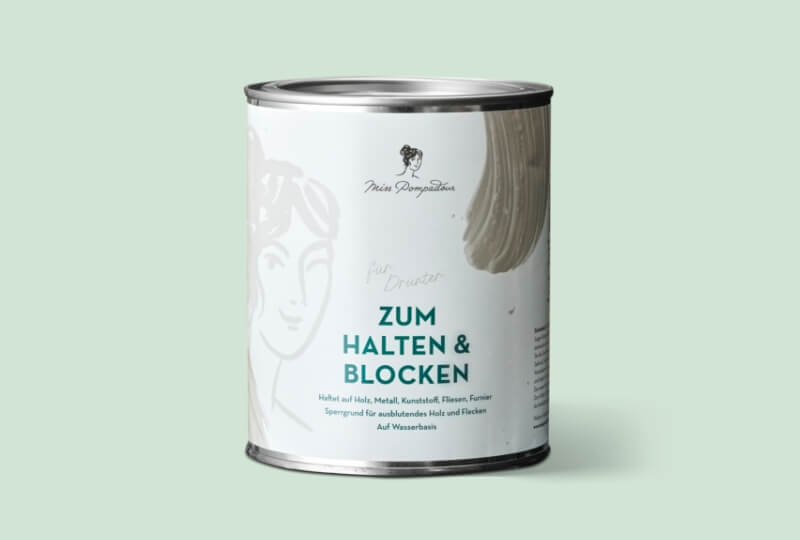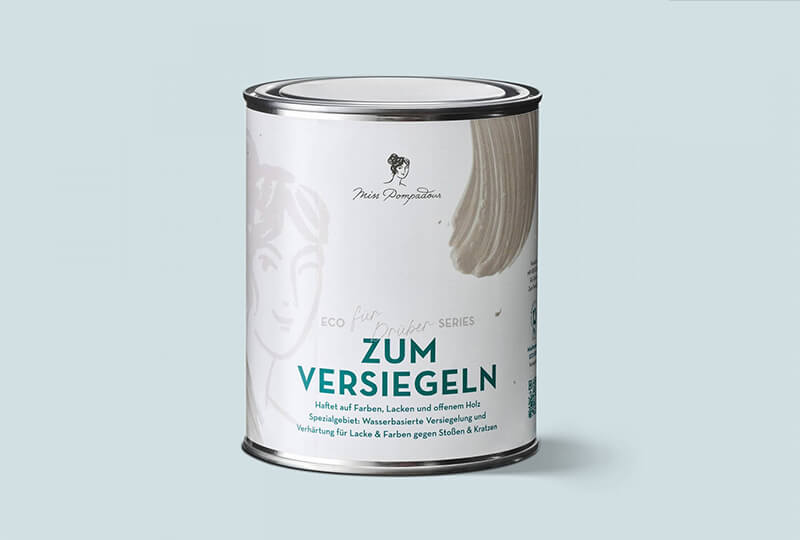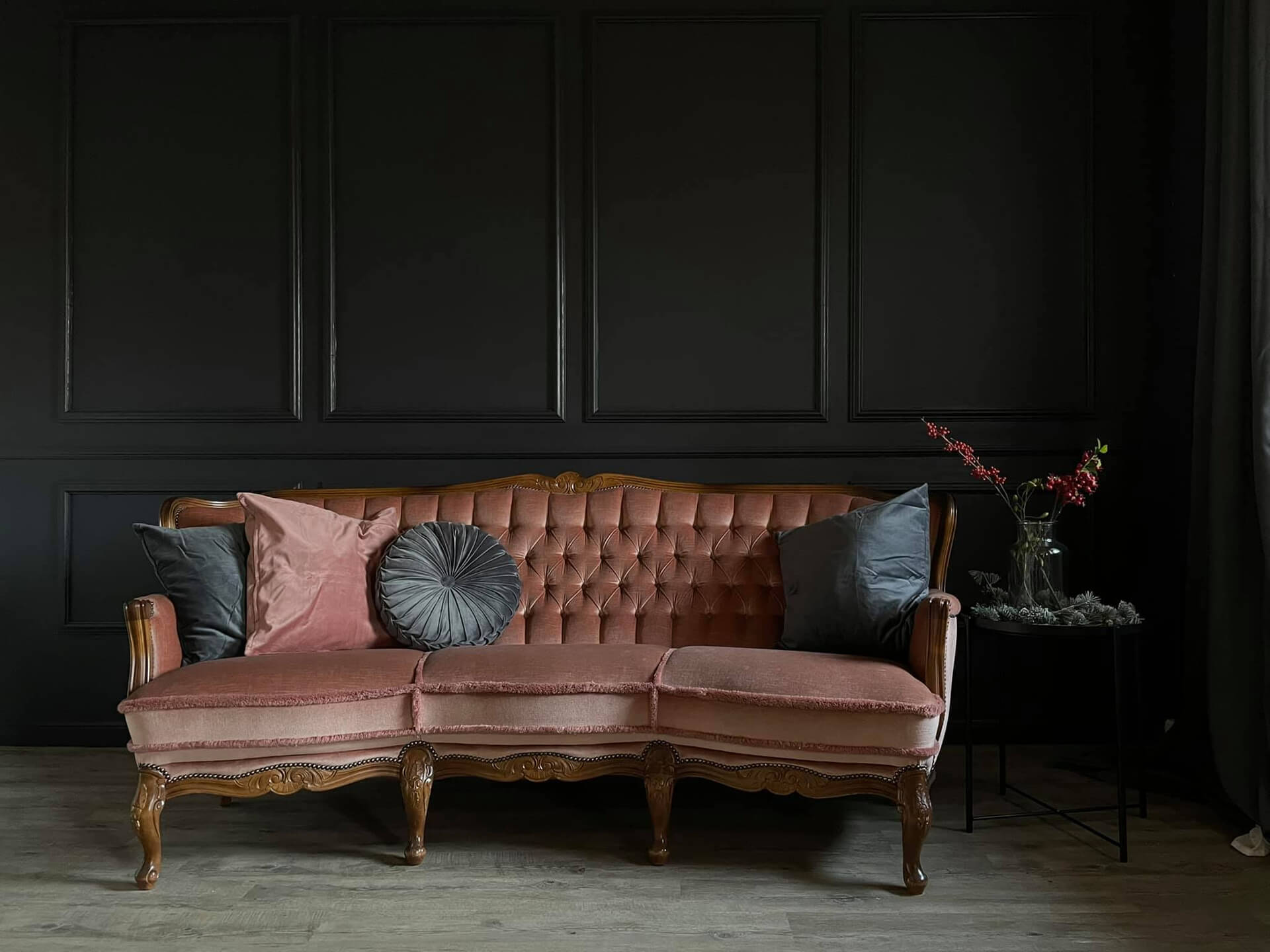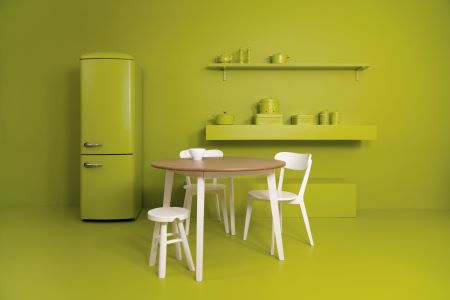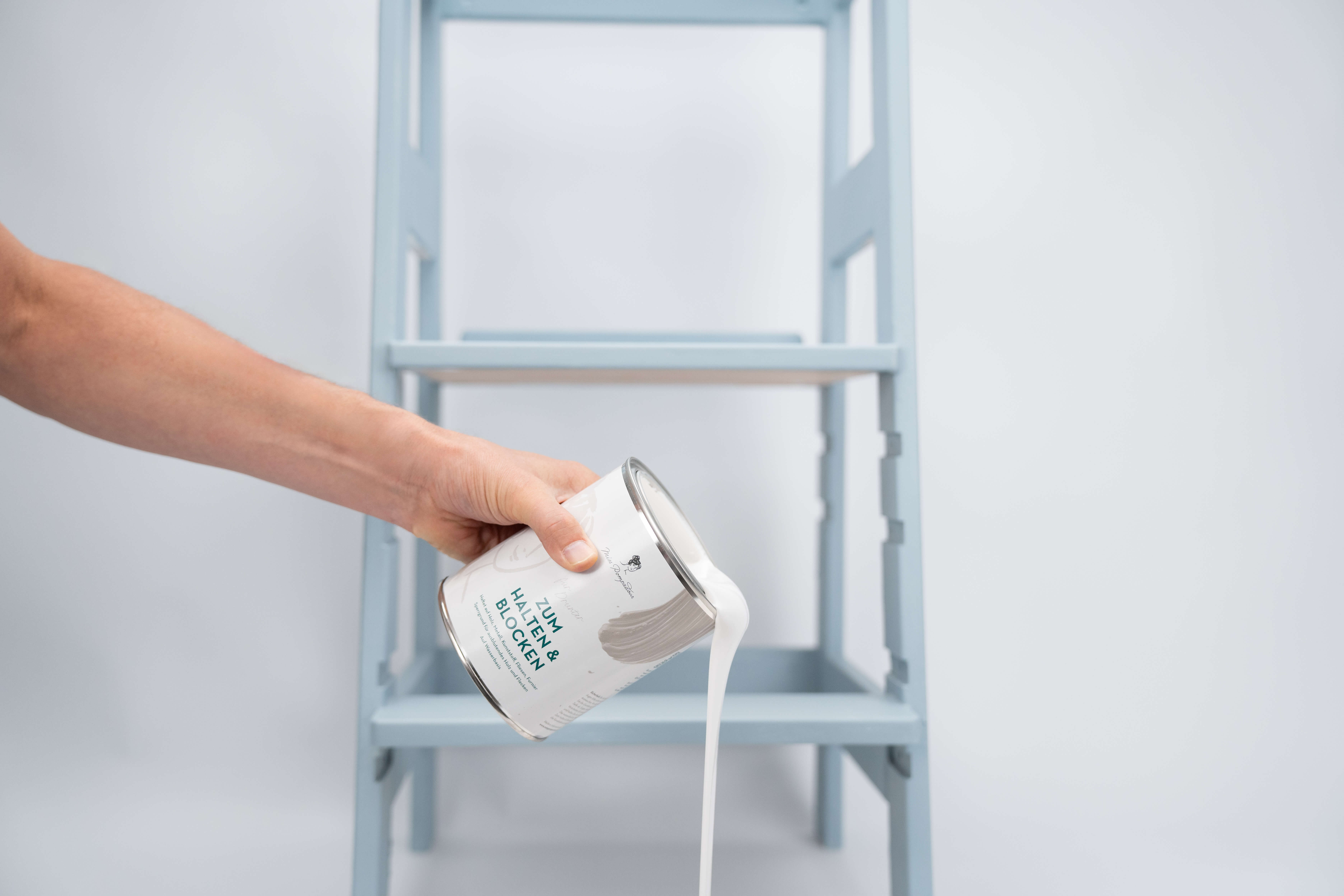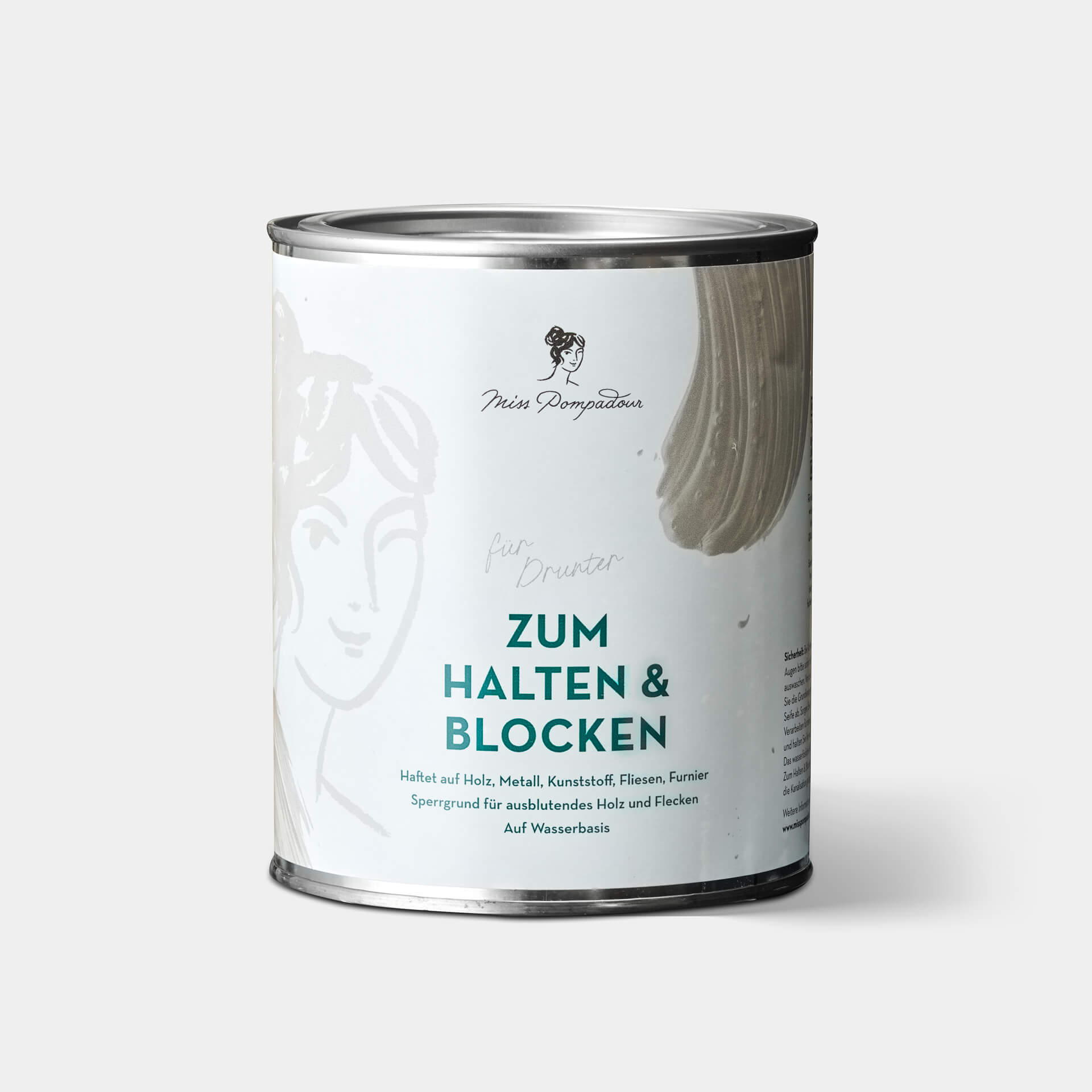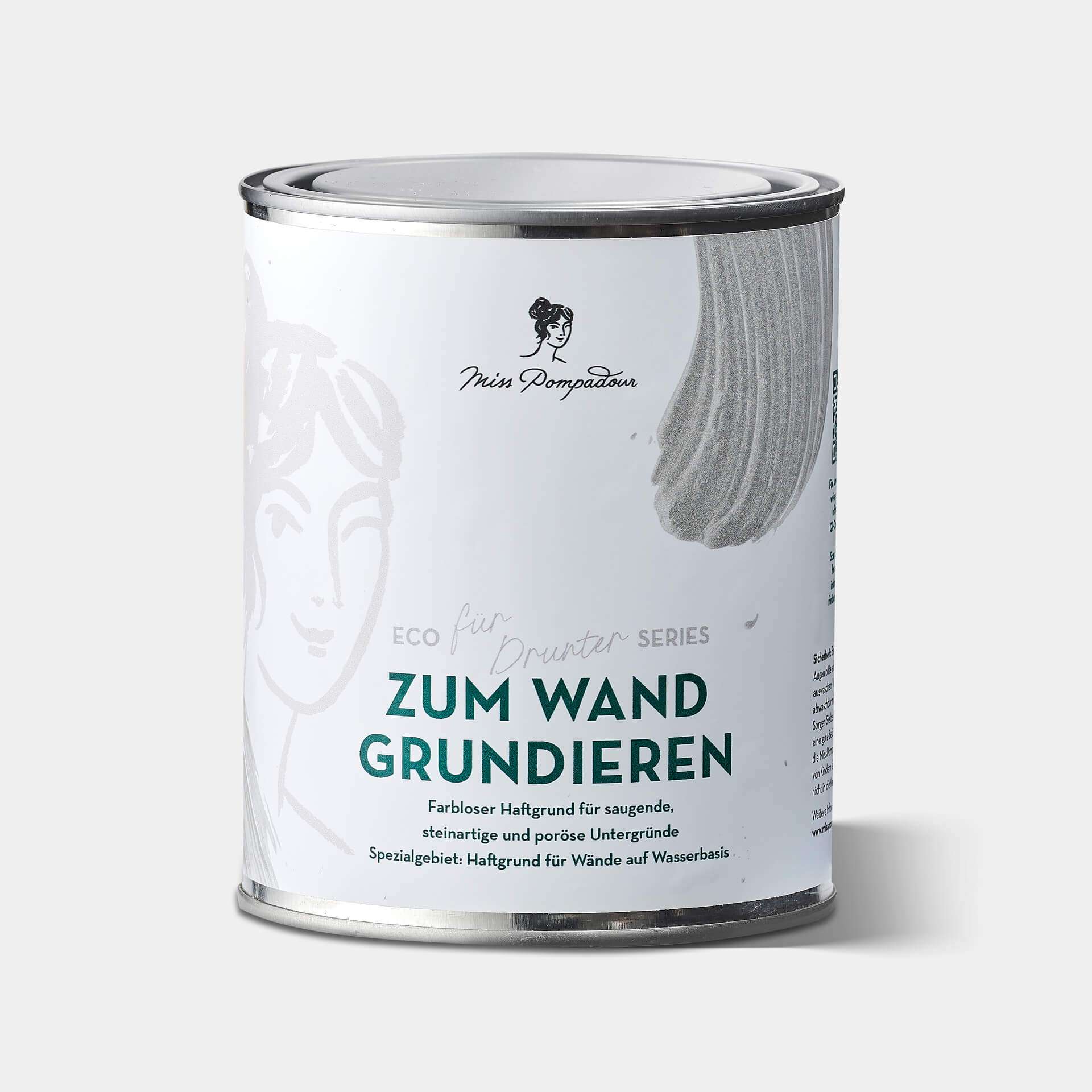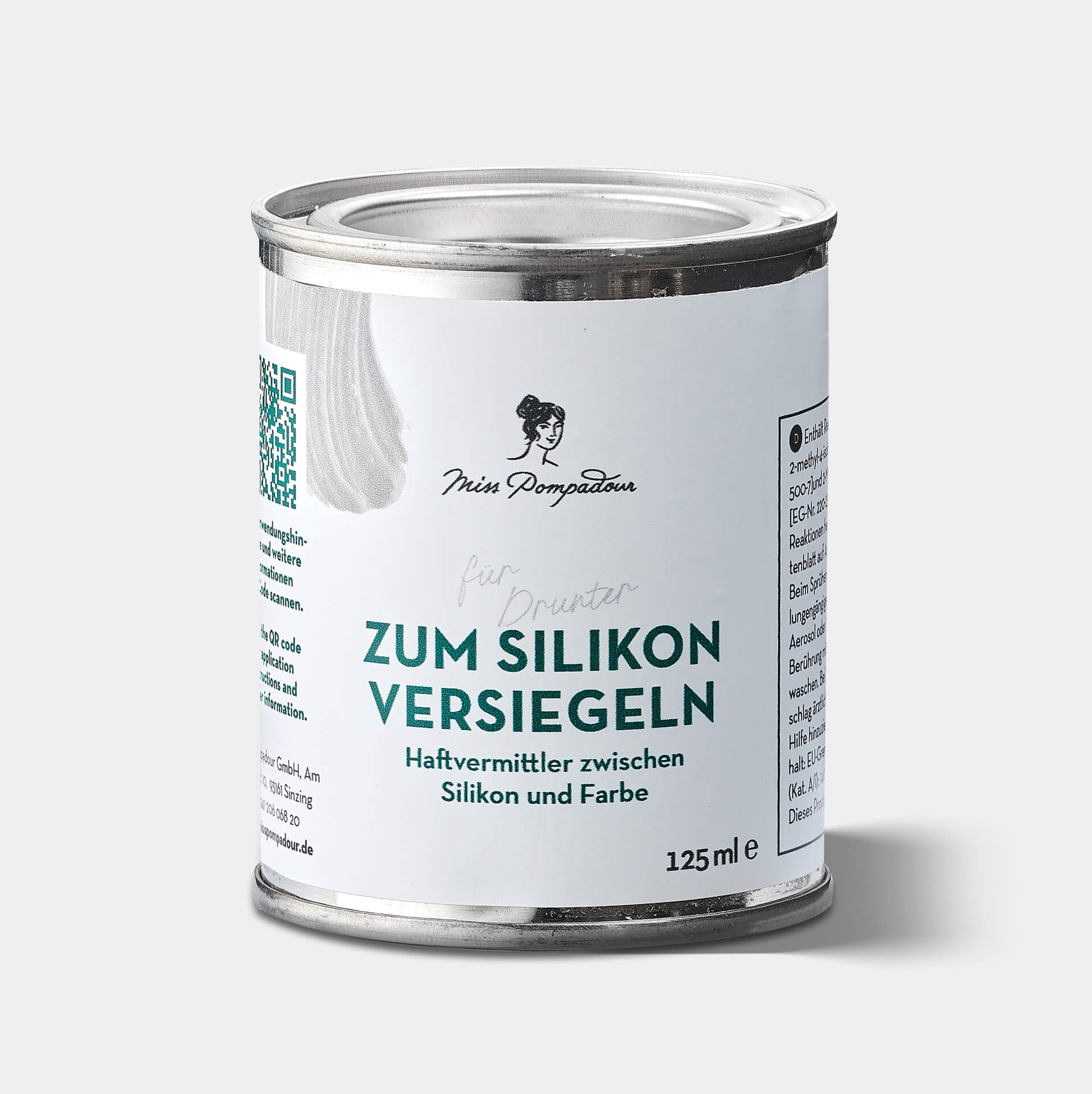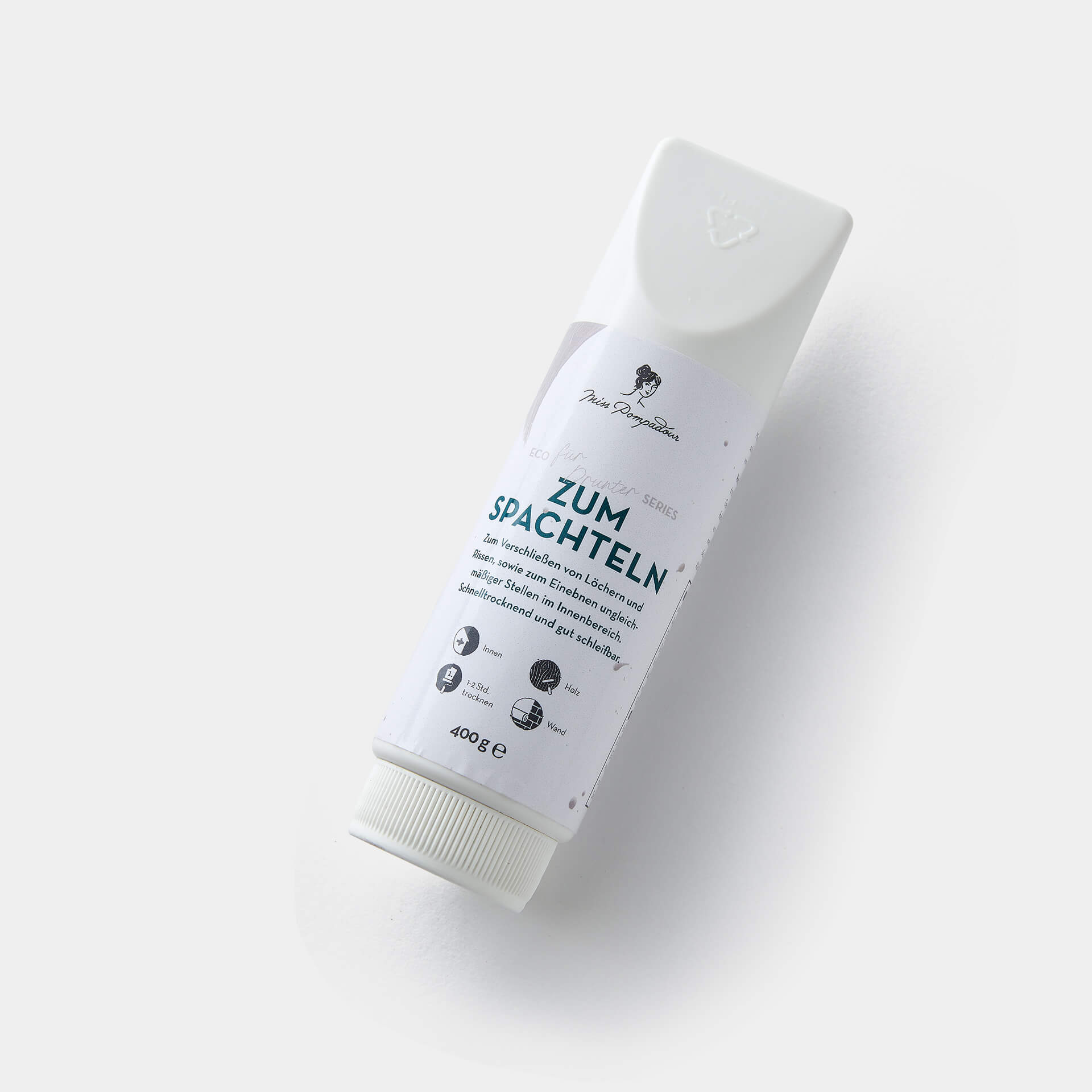

Primers for varnishes and wall paints
Normally, our paints can be applied to any substrate. This also applies to old varnishes, plastic surfaces, glass or walls painted with elephant skin.
But there are a few exceptions where primers are needed.
Primers for wall paints
If you want to paint walls with wall emulsion that have sandy, crumbly, fresh or very porous plaster, you should always prime with a deep primer. This will create an even surface that is easy to work on and that absorbs the paint perfectly. This also applies if there are extreme stains on the wall, such as those caused by soot or ink. Grease or oil residues should also first be painted over withTiefengrund, or Stainblock or stainblock.
Primers for wood
If you want to work with our varnishes on wood, it is worthwhile to use a primer, especially on very raw wood . It closes the open wood pores and you save enormous amounts of varnish.
Even if your workpiece is made of oak or similar woods where the tannic acid contained in the wood could bleed, a primer coat with stainblock is necessary. The same applies to stained wood surfaces.
If you are not sure whether your object will bleed or colour on contact with the water-soluble paint, test by rubbing the surface with a wet cloth. If the wood gives off colour, you will definitely need a stain block.
But even if the rag does not discolour, a primer can still be useful.
Primers for metal
If you want to paint metal surfaces, you should always use a Mylands Metal Primer or To Block - MissPompadour Stainblock. This is because they form a secure barrier between metal and paint. And this is important because the water contained in the paints could cause corrosion. This would cause your workpiece to rust.


